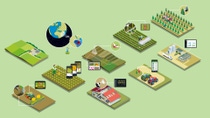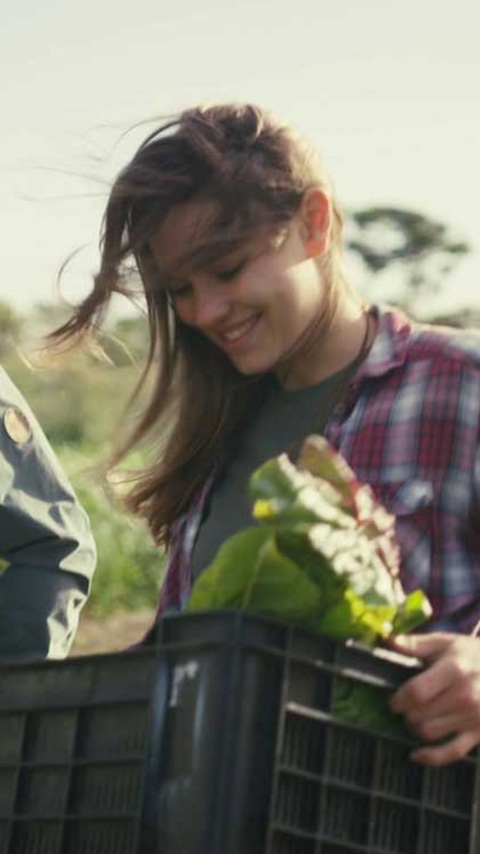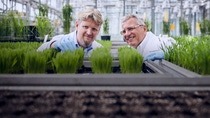Priopćenja i novosti
Smart Farming
For centuries farmers have tilled the soil to clean the field of weeds and remnants of the old crop before planting for the new season. But Jake Freestone, a farmer in the west of England, instead operates a practice called no-till. The soil is left undisturbed with its organic matter and nutrients intact. The residue from the previous crop acts as cover to maintain the moisture in the soil. For Freestone, the benefits are clear. “We are prone to erosion here,” he says. “By not disturbing the soil we have created a more stable surface that absorbs more water. The soil is well-structured and we are getting good yields.”
No-till is one of many new ideas that farmers are trialing to increase productivity. They face a tough challenge. Meeting the nutritional needs of the world’s population in 2050 means increasing global food production by 50 percent compared to 2013, according to the Food and Agriculture Organization of the United Nations (FAO). Clearing forest to create more agricultural land is counterproductive, as deforestation is a main cause of global warming. We therefore need to grow more on existing farmland, without increasing negative impacts on the environment.
This approach is called sustainable intensification. There are many ways to achieve it. What works in the USA might not be relevant in Malawi. But all farmers have the same basic resources: soil, seeds, water, crops and livestock. Sustainable intensification needs farmers to be as smart as possible in how they use those resources.
Increasing precision
Thousands of miles from Freestone’s farm, in sub-Saharan Africa, farmers face severe challenges growing crops on degraded land without the resources to invest in sufficient fertilizer. Here, they have trialed microdosing – a way of using fertilizer more efficiently – in which small quantities of fertilizer are applied directly in the seed hole. It requires only a tenth of the fertilizer typically used. When the method was trialed by 25,000 farmers in Mali, Niger and Burkina Faso between 2009 and 2012, sorghum and millet yields increased by up to 120 percent.
Microdosing is very labor-intensive, but the principle of making fertilizers more efficient is a key to the solution. “Increased nutrition uptake by crops will improve fertilizer use, increase yield and reduce emissions into the environment,” says Julia Harnal, Vice President Sustainability at BASF’s Agricultural Solutions division, Limburgerhof, Germany. “That is what we have done with Limus®. The fertilizer additive blocks specific enzymes in the soil that affect the availability of nitrogen to the plant. More nitrogen during critical growth stages results in better yields.”
Farmers are the best entrepreneurs. They are keen on applying the right solutions. Whether it’s about soil, seeds, crops or livestock, innovation is essential if we are to make the most of our limited resources.”
Stronger seeds and crops
The same smart farming principle applies to seeds. We have been selectively breeding plants since farming began. Today, our ability to produce plants with specific characteristics is moving fast. A revolutionary genome-editing technology known as CRISPR/Cas9 has emerged and this will make seed customization more precise. “It makes it easy to turn genes on and off,” says Tim Searchinger, Senior Fellow at the World Resources Institute in Washington D.C., USA. “This has great potential. If you know which gene causes drought tolerance in one crop, that provides insights into what you can do in another crop.”
But even with the best seeds, all crops still need managing, especially against pests and diseases. On Freestone’s farm in England, a biological form of pest control – beetle banks – has shown good results. “For larger fields, we create a ridge of soil in the middle that provides habitat and food for insects, spiders and birds. These natural predators help to control pests in the crop,” Freestone says.
What is Sustainable Agriculture?
Definition
Sustainable agriculture means meeting our needs today in a way that leaves it possible for future generations to meet theirs. That involves providing enough safe and nutritious food for a growing population at an affordable price and in a way that is profitable for farmers with as little as possible negative impact on the environment.
Approaches
There are different ways to reach that balance, from organic to sustainably intensified agriculture. All sustainable farming systems ought to provide farmers with a full toolbox of innovative technologies, solutions and know-how to enable them to continue producing the food society needs, in a way that is safe for the farmer, safe for the environment and safe for the consumer.
“It is all about increasing agricultural productivity through the efficient use of scarce resources,” says Julia Harnal, Vice President Sustainability at BASF’s Agricultural Solutions division, Limburgerhof, Germany. “To do this, we need as many tools as possible. With innovative seeds and crop protection products, together with new digital technologies, we can grow more food on less land with less water and other inputs. That is my definition of sustainable agriculture.”
Encouraging natural predators is one part of Integrated Pest Management, a practice based on using a variety of pest-control methods and techniques, enabling farmers to use the best available options to balance high yield and low environmental impact. In Africa, to combat fall armyworm, some farmers are using push-pull techniques. This means intercropping maize with a plant that repels the pest, while planting a border of another species that attracts and traps them. This is a low-input approach, but it requires time.
Crop protection products therefore still have a place in the toolbox. Today they have to comply with increasingly stringent regulations. “The active ingredient has to be poisonous for the pest while being more or less harmless to everything else,” says Harnal. BASF’s new fungicide Revysol® has been developed with these requirements in mind. You can find out more about it in The Science.
A smaller footprint for livestock
What about livestock? Demand for beef and dairy products is increasing around the world but cattle are a major emitter of methane, a potent greenhouse gas. Cattle are responsible for some 65 percent of greenhouse gas emissions from the livestock sector globally.
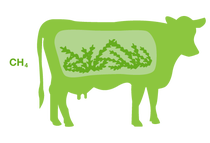
Using better feeds can reduce methane generated during digestion.
Researchers at the University of California, USA, have found that cattle feed containing 1 percent of seaweed cuts methane production by up to 60 percent.
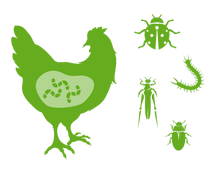
For other animals, such as chicken, pigs and fish, the use of insects as feed is promising. Insects can be raised efficiently on waste matter and are high in protein.
Trials have produced positive results; the challenge is to scale up production to make it competitive.
As well as being more productive and more sustainable, growing food also has to make good business sense. Farmers have a vested interest in increasing yields without depleting their finite resources. They will therefore adopt innovative tools and techniques that can help them to do so. “Farmers are the best entrepreneurs,” says Harnal. “They are keen on applying the right solutions. Whether it’s about soil, seeds, crops or livestock, innovation is essential if we are to make the most of our limited resources.”
Innovations for a growing challenge
In order to feed the extra billions of people predicted to be living on Earth by 2050, we have to find ways to increase the yield of available land.

Look into the future of precision farming
Digital technology has truly arrived in the agricultural sector. Sensors, smartphones, drones, and robots are now almost as common as muck and fertilizer on the farm. Machine learning, artificial intelligence and big data are helping farmers to increase yields and improve sustainability at every stage of the growing cycle from seeding to harvest. Yet farming remains a very human-centered activity, with digital technologies enabling farmers to make better informed decisions, faster. Explore interactive infographic.
